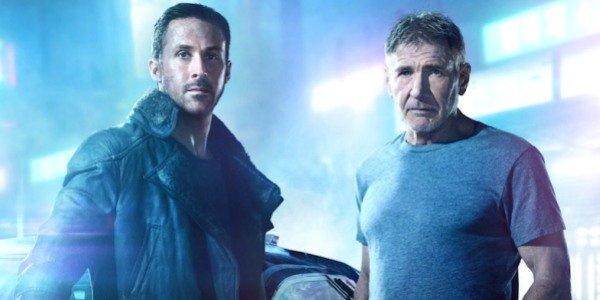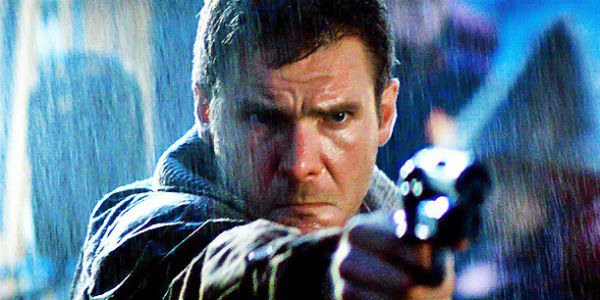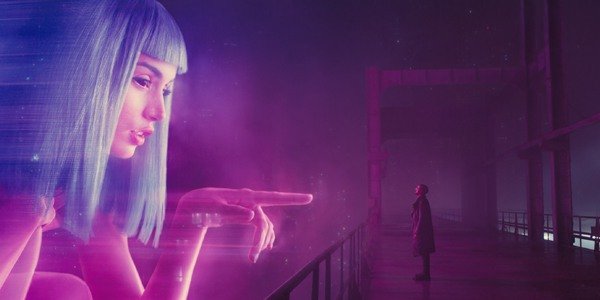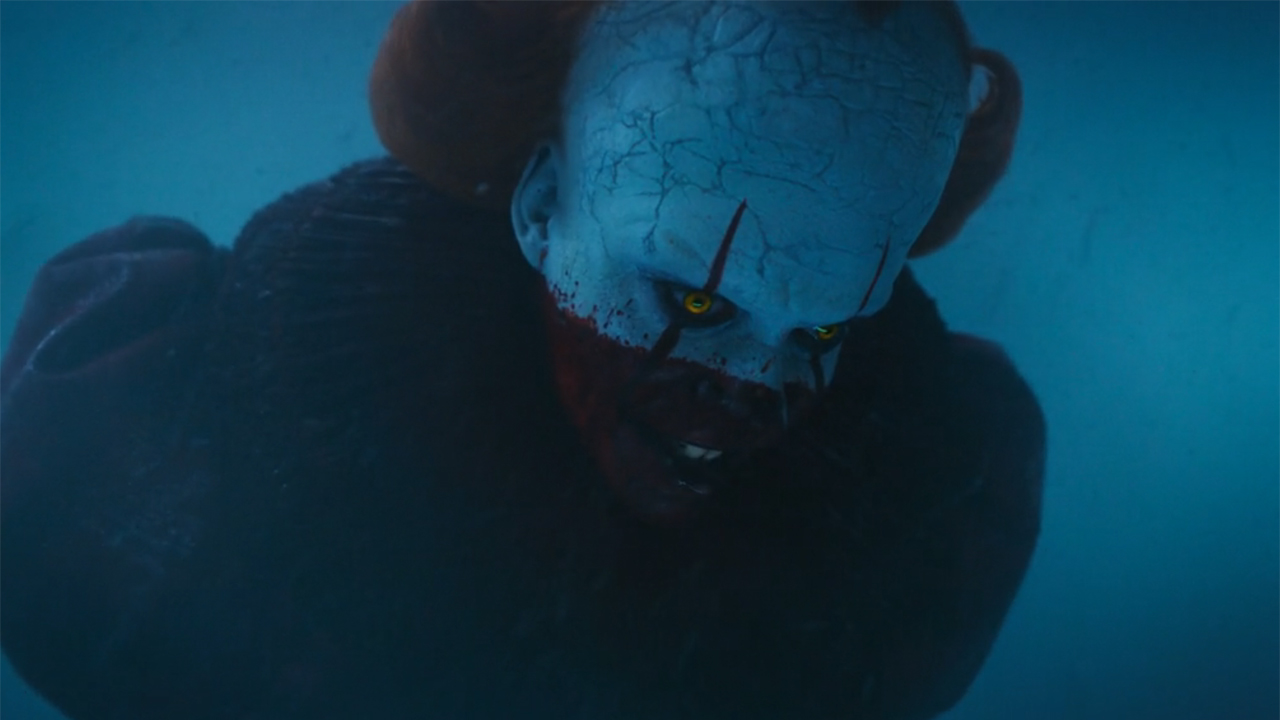How Blade Runner 2049 Compares To The Original

SPOILER ALERT: this piece reveals important plot details of both Blade Runner and Blade Runner 2049**.**
In 1982, director Ridley Scott redefined what science fiction was capable of with Blade Runner. Thirty-five years later, director Denis Villeneuve reinforced what the original Blade Runner proved about the genre with a follow-up, Blade Runner 2049.
Both the original Blade Runner and its 2017 sequel are unique takes on noir detective fiction set in a dystopian, futuristic landscape. Themes of technology’s over-encompassing influence on society and its side effects of paranoia are prevalent and even more so timely in Blade Runner 2049.
We are steadily approaching the time in which the 1982 Blade Runner is set (November 2019) and its Oscar-winning sequel is still a topic of interest for its filmmaking craft and expansion of the original’s themes and elements. So, why not analyze these films a bit deeper and see how they compare to one another?

Blade Runner
The question on any Blade Runner fan’s mind would be “which Blade Runner are we discussing here?” given that there have been five different cuts of the film since its original 1982 release. For the purposes of simplicity and staying within the lines of official continuity, we will be talking about 2001’s The Final Cut, while still keeping the theatrical cut’s historical relevance in mind.
Inspired by the Phillip K. Dick novel Do Androids Dream of Electric Sheep?, Blade Runner takes place in San Francisco, circa 2019: a time in which artificial, human-like beings known as Replicants have been outlawed on Earth. Harrison Ford plays Rick Deckard, a cop from a special unit known as Blade Runners, who has been assigned to locate and “retire” four rogue Replicants searching for their creator in hopes he will extend their limited lifespan.
The first thing people often talk about in regards to Blade Runner is its visual effects, which were astonishingly ahead of their time in 1982. Even today, the film still turns heads at how remarkably it managed to bring Ridley Scott’s dystopian vision to life and appear so realistically.
Your Daily Blend of Entertainment News
The director’s bleak vision of the future, which takes notes from Phillip K. Dick’s original novel and screenwriter Hampton Fancher’s adaptation, is still very relevant in how heavily influential it has been on the science fiction genre, both aesthetically and thematically. Concepts focusing moral implications of genetic engineering, religion and our cultural understanding of what makes one “human” in the midst of technophobic paranoia had never been tackled in cinema quite like Blade Runner attempted, and especially not in a style that fused dystopia with a classic, noir-ish filmmaking approach.
The binding of these themes and styles come to their most potent connection at Blade Runner’s climax, which sees Rick Deckard’s (Harrison Ford) final confrontation with Roy Batty (Rutger Hauer), one of the Replicants on Deckard’s trail. What begins as a vengeful stand-off ends with a somber reflection of Batty’s existential dread as Deckard watches him succumb to his pre-programmed, irreversible mortality with a look of unexpected sympathy.
What Blade Runner: The Final Cut is arguably most famous for and what the film’s most devoted fans have torn themselves apart trying to figure out is its ambiguous ending. It subtly suggests a possibility that Rick Deckard is unknowingly a Replicant himself, taking the questions of humanity that the film proposes to a much deeper level.
Filmmakers, authors and philosophy scholars alike keep Ridley Scott’s Blade Runner firmly asserted in their thoughts in the discussion of its cutting edge visual mastery and remarkable analysis of humanity in a world run, or decidedly tarnished, by progress. In its sequel, we see an even darker side of that world as it poses a stark reflection of our current generation.

Blade Runner 2049
Academy Award-nominated filmmaker Denis Villeneuve assumed the directing duties for the follow-up to Ridley Scott’s classic, Blade Runner 2049. Set 30 years after the events of the original, the story primarily follows a blade runner named “K” (Ryan Gosling).
What we quickly come to learn, which the promotional material for Blade Runner 2049 was keen not to reveal, is that “K” is not like blade runners before him because he is a Replicant, or so he believes. When the remains of a woman who died in childbirth is revealed to have been a Replicant, “K” is tasked with finding the child, only to find clues that suggest the child may be him.
In order to figure out the truth, “K” must track down the man who may be his father. Hiding in the uninhabitable remains of Las Vegas is where “K” finds Rick Deckard (Harrison Ford).
Blade Runner 2049 sort of takes the question of Rick Deckard’s humanity from the original and reverses it by following a seemingly artificial protagonist who begins to question if he may really be human or, more accurately, a cross-breed of human and Replicant (or Replicant and Replicant?) which the world had never imagined could be possible. As word begins to spread over this special child, Replicant manufacturing tycoon Niander Wallace (Jared Leto) sees this as a revolutionary opportunity for the future of his business.
While the original Blade Runner analyzes the concepts of humanity through the eyes of artificial people in a more empathetic lens, Blade Runner 2049 is nearly an indictment on the personification of material objects that our generation has thoughtlessly allowed. For instance, and most essentially, the relationship between “K” and his lover Joi (Ana de Armas), who is essentially a virtual reality Alexa.
The film does a masterful job at convincing us that the relationship between an artificial human and a hologram is a relationship of genuine affection, especially when Joi, after learning of “K’s” possible humanity, proposes he go by a real name: Joe. After Joi is killed when her emulator is stomped on seconds after she professes her love to “K,” he later sees an advertisement for the “Joi” VR product, which uses the name “Joe” as a generic name for the target male demographic.
This brings up the question of whether or not Joi and “K’s” relationship was genuine and if the things she said to comfort him were just part of her programming. While the answer is left ambiguous, it does make us consider easily we allow ourselves to personify material objects given how easily the film convinces us that a hologram could be capable of love.
Yet, that also raises the question of what “K” is capable of, because until he begins to believe that he may be human, he is relatively cold and unfeeling, even toward "Jo" and especially to the Replicants he retires. He begins to understand the concept of humanity and sees it in others like him, even after he discovers that he is not Rick Deckard’s child after all, still recognizing the importance helping Deckard reunite with his real daughter in the end.
I believe Blade Runner 2049 improves on its predecessor mostly from its breathtaking, Oscar-winning cinematography by Roger Deakins, brilliant performances and thoroughly intriguing mystery plot. What I especially admire 2049 for is how it tackles the same themes and concepts as Blade Runner in a stunningly unique way.
While certain themes from the original Blade Runner are relevant to real life in several ways, its concepts lives mostly within its world, especially with the inclusion of Replicants. Blade Runner 2049 succeeds in both expanding on the world of the original while also commenting on real-life, modern-day concerns regarding how we interact with technology.
Blade Runner has always been a film that I admire for its groundbreaking visuals and thought-provoking themes more than I can say I enjoy it. As for Blade Runner 2049, not only do I admire its glorious cinematography and mind blowing ideas, I adore its thoroughly compelling mystery, fascinating character study and bewilderingly relatable subject matter.

Jason Wiese writes feature stories for CinemaBlend. His occupation results from years dreaming of a filmmaking career, settling on a "professional film fan" career, studying journalism at Lindenwood University in St. Charles, MO (where he served as Culture Editor for its student-run print and online publications), and a brief stint of reviewing movies for fun. He would later continue that side-hustle of film criticism on TikTok (@wiesewisdom), where he posts videos on a semi-weekly basis. Look for his name in almost any article about Batman.
